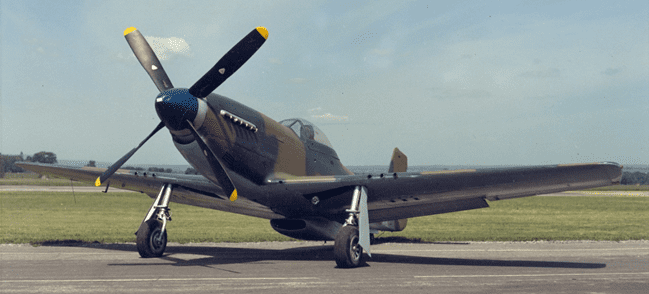The North American Mustang was first flown in 1940 and eventually became one of the finest long-range fighters of the Second World War. Early versions, fitted with Allison engines, initially lacked high altitude performance and were therefore used by both the Royal Air Force (RAF) and RCAF for low-level reconnaissance and ground attack duties. Further modifications to the design resulted in the marriage of the Rolls-Royce Merlin engine to a re-designed airframe. This latter combination, known as the Mark IV in RAF and RCAF service proved to be outstanding. Three RCAF squadrons (400, 414 and 430) used early model Mustangs in the reconnaissance role and 441 and 442 Squadrons converted to the Mk IV variant in 1945 for long-range escort duties. In the post-war period, the RCAF acquired a further 88 Mustang IV aircraft for use by both regular and auxiliary squadrons. The aircraft survived in this latter role until 1961.
General characteristics
- Powerplant: One 1,590 horsepower Packard (license-built) V-1650-7 Merlin piston engine
- Empty weight: 3,232 kg (7,125 lbs)
- Maximum Gross weight: 5,262 kg (11,600 lbs)
- Wingspan: 11.29 m (37 ft)
- Length: 9.83 m (32 ft)
- Height : 4.17 m (13 ft)
Performance
- Maximum speed: 721 km/h (389.3 kts)
- Cruising Speed: 579 km/h (312.6 kts)
- Service ceiling: 41 900 ft (12 771 m)
- Range: 2 092 km (1129.6 nmi)


